LaserJet Page Yields
For all LaserJet printers and Multi Functional Products sold, HP publishes page yield data for the printer function of these devices. For Inkjet printer yields see www.hp.com/go/pageyield.
Page yield data should be used as a starting point for comparison purposes, and not to predict the exact yield you will get from your HP printer and cartridge. Likewise, the declared yield is not intended to be the minimum number of pages that the cartridge will print. Rather, page yield data is meant to estimate the average yield expected from a particular cartridge when measured using the ISO test methodology in connection with a designated printer system.Individual cartridges can perform above and below this average due to variation in the cartridge manufacturing process.Additionally, actual yield varies considerably based on factors such as the content of printed pages, typical printer job size, the environmental conditions during operation and the amount of colour printing relative to monochrome printing. For more information see .
In recent years, LaserJet Printer and Multi Functional Product yield data has been calculated using standard ISO test methodologies.The specific ISO/IEC standard used depends upon whether the printer is a monochrome or colour device. ISO provides different methodologies for testing colour and monochrome printer yields.Previous to the introduction of the ISO/IEC yield methodologies, HP had its own proprietary yield test methodology based on 5% coverage which used a methodology similar in many ways to the ISO yield methodology.
Some HP printers include an "introductory cartridge" in the printer box, which may print less than HP replacement cartridges.HP's printer packaging will indicate whether introductory cartridges are included with the printer.
HP monochrome printer declared yield is determined using the ISO/IEC 19752 test methodology
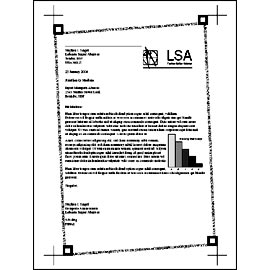
Figure 1: ISO/IEC 19752 Standard Test Page
Under the ISO/IEC 19752 testing guidelines, a standard page is printed continuously until the cartridge reaches end-of-life.An example of the standard page shown is shown below. The actual test page can be found at www.iso.org/jtc1/sc28 .
.
ISO/IEC 19752 methodology has been used by HP to test monochrome printer yields since its introduction in 2004. A small number of toner cartridges still being sold by HP provide page yield based upon HP's 5% coverage methodology. For more information about the declared page yield of cartridges sold for use with specific HP monochrome printers see www.hp.com/go/pageyield.
HP colour printer declared yield is determined using the ISO/IEC 19798 test methodology
Under the ISO/IEC 19798 testing guidelines, a standard set of five pages is printed continuously until the cartridge reaches end-of-life. The five standard pages shown below consist of a mix of text and graphics, and a mix of black and colour. HP adopted these standards for colour printers that were introduced after the publication of the standard at the end of 2006. Products produced prior to this continue to use HP's proprietary yield test method.
Actual yield that a customer experiences can vary depending upon the printed content on the page. Highly "dense" documents, such as the text document below, may cause cartridges to yield fewer pages than the ISO standard, while less dense ones such as the organisation chart below will typically cause the cartridge to yield more pages than the standard. The yield you experience will depend upon a number of factors including the content that you print and the manner in which you print.
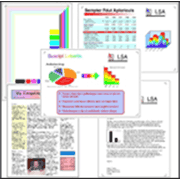
The five standard ISO pages
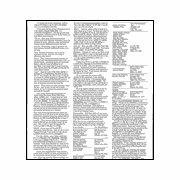
High density text
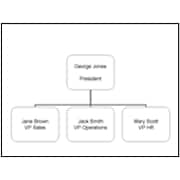
Org Chart
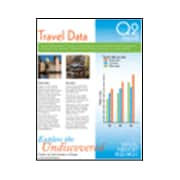
High use of cyan
For more information on HP LaserJet printer toner cartridges see .
ISO page yield testing methodology
HP publishes page yield data based upon the ISO standard for measuring laser printer cartridge yields (ISO/IEC 19752 and 19798):
- The test is based on a standard suite of five pages (colour) or a single page (monochrome) printed consecutively until the cartridge reaches end-of-life. A cartridge is determined to be at end-of-life when the test pages fade or, for some printers, when the printer automatically stops due to end-of-life detection.
- To account for variations that may occur, a minimum of 3 cartridges of each cartridge type is tested in each of 3 printers.
Details of the ISO/IEC printing standards are available at www.iso.org .
.
What is ISO?
ISO (International Organisation for Standardisation) is the world's largest developer and publisher of International Standards.
ISO is a network of the national standards institutes of 157 countries, one member per country, with a Central Secretariat in Geneva, Switzerland, that coordinates the system.
ISO is a non-governmental organisation that forms a bridge between the public and private sectors. On one hand, many of its member institutes are part of the governmental structure of their countries or are mandated by their government. On the other hand, other members have their roots uniquely in the private sector, having been set up by national partnerships of industry associations.
Therefore, ISO enables a consensus to be reached on solutions that meet both the requirements of business and the broader needs of society. For more information on ISO see www.iso.org .
.
How HP displays page yield data
HP publishes declared ISO page yield numbers for each LaserJet cartridge (where ISO is applicable) www.hp.com/go/pageyield.
What is Individual yield versus a composite Yield for color cartridges?
An individual yield for a given colour cartridge is the individual calculated page yield of a given colour cartridge as demonstrated by testing using the ISO methodology, based on a minimum of 9 cartridges tested to end of life.
A composite yield, simply stated, is a weighted average of the individual yields (as demonstrated by testing using the ISO methodology) of the cyan, yellow and magenta cartridges.
For example, if the ISO test methodology indicates that the individual yields of a given set of cartridges are 480 for cyan, 500 for magenta, and 520 for yellow, the composite yield would be 499. The Composite yield number helps simplify yield reporting.
HP publishes a 3-colour composite page yield for LaserJet printer cartridges. The composite yield is based upon the ISO 19758 reporting methodology for colour printers, which provides for a single average reporting yield for Cyan, Magenta and Yellow ink cartridges. Black is reported separately as an individual yield.
Example of composite CMY yields
Although yields are calculated for individual cartridges, the yield test itself is conducted with all of the cartridges installed in the printer. LaserJet Printers are complex systems that may use more than one colour cartridge when printing text and graphics. See for more detail.
HP's recommendation
Keep in mind that page yield is just one component of cost, and that factors such as quality, reliability, productivity and efficiency affect cost as well. Products that work reliably will ultimately save you time and money. When you choose a LaserJet printer, make sure you consider your individual printing needs.
 HP Printer: USA
HP Printer: USA